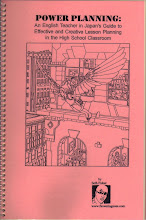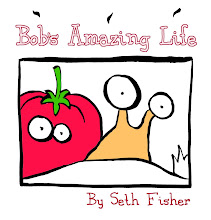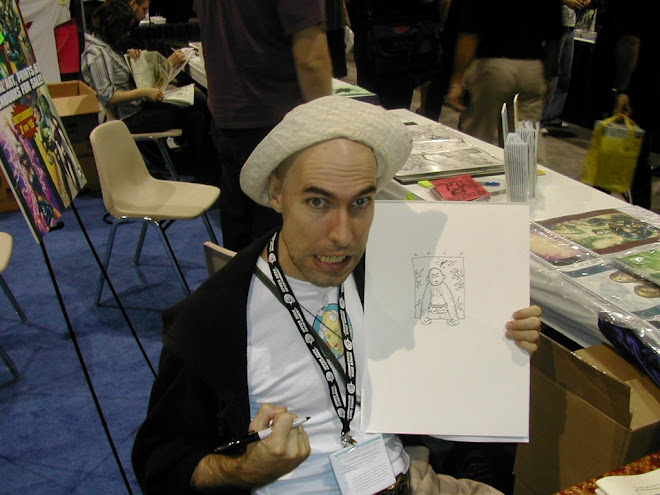 I know I have shown this page before, but it is such a clear example of Seth using the size and shape of the frames to control timing in his work that I thought it was worth another view. Here they are in a desert, Hal and his angel friend, with Hal's wonderful animal. Walking through the desert is loooong and boring, but how can you get the reader to feel the length and boredom on just one page? You make many many frames where not much happens, but you see the characters and the horizon and the hot sun. In order for the reader to understand, he or she must be willing to actually look at each of the small panels, not necessarily slowly, but to go through them, not just skip them and head for the dialogue. Then he will feel--rather than just be told--that they have been wandering in the desert for three weeks.
I know I have shown this page before, but it is such a clear example of Seth using the size and shape of the frames to control timing in his work that I thought it was worth another view. Here they are in a desert, Hal and his angel friend, with Hal's wonderful animal. Walking through the desert is loooong and boring, but how can you get the reader to feel the length and boredom on just one page? You make many many frames where not much happens, but you see the characters and the horizon and the hot sun. In order for the reader to understand, he or she must be willing to actually look at each of the small panels, not necessarily slowly, but to go through them, not just skip them and head for the dialogue. Then he will feel--rather than just be told--that they have been wandering in the desert for three weeks.Comic book art is made to be accessible to most people. But the more attention a reader pays to Seth's work, the more he will get out of it. This means that a good artist demands more from readers than a hack artist, but the rewards are much greater too.





2 comments:
Excellent points. Sadly points which may have been missed on many readers, as it was DC’s intention (right from the get-go?) to publish this story as a ‘graphic novel’.
I’d have to bet that if Seth’s story ran as a 2 or 3 parter in the monthly comic of Green Lantern it would have blown away so many more people.
Interesting. I have no idea about the merchandising. But the book was first put out as a hardback. Prestige format. It seems to me it was meant to appeal to the discerning reader.
Post a Comment